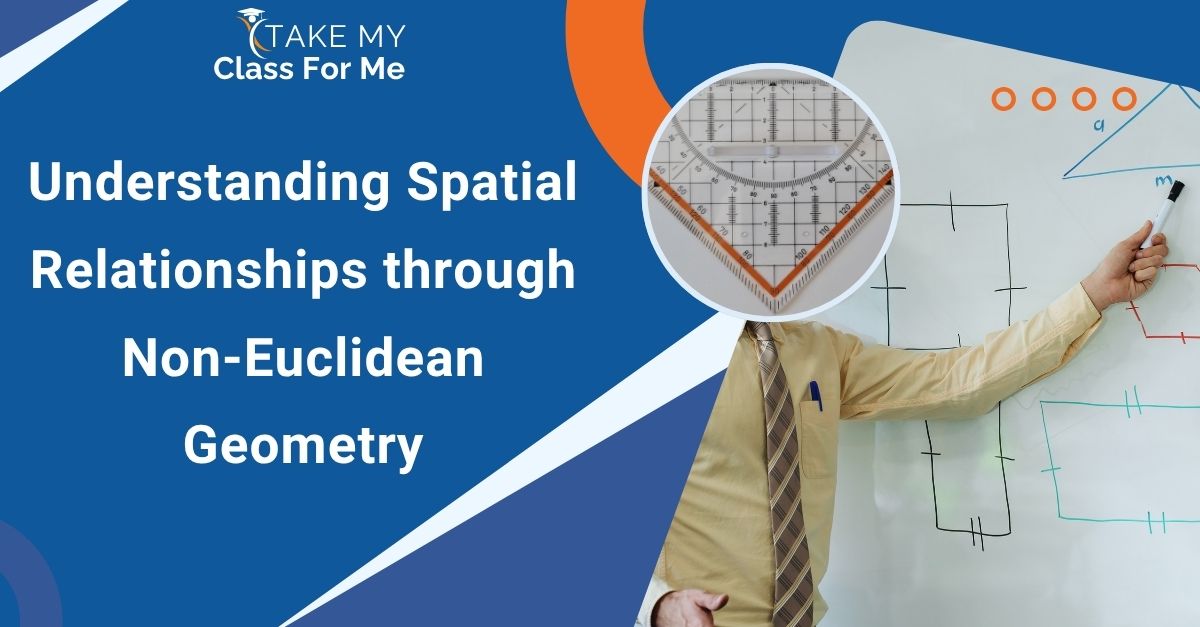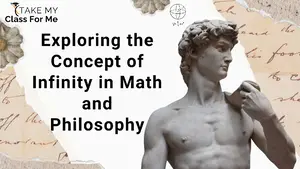Non-Euclidean geometry will help you understand how things relate to each other in space. It will also focus on different aspects such as dimensions, curvature, and spatial relationships. By studying non-Euclidean geometry, you can gain new insights into the universe and how it affects physics, math, cosmology, and philosophy.
For a long time, people used Euclidean geometry to understand the world around them. This geometry type primarily deals with straight lines, right angles, and the idea that parallel lines never touch. It is considered the standard for understanding shapes and distances and is frequently used while constructing and designing buildings. However, non-Euclidean geometry changed the traditional notions and provided a new way of thinking about space. Do you know what a non-Euclidean geometry means? Would you like to know how non-Euclidean geometry changes the human understanding of space and shape? If yes, then read this blog. Here, we have shared all the details about understanding spatial relationships through non-Euclidean geometry.
What is Non-Euclidean Geometry?
Non-Euclidean geometry is a type of geometry that differs from traditional Euclidean geometry. The main difference lies in how it handles parallel lines and the nature of space. Euclidean Geometry states that the shortest distance between two points is a straight line. Unlike Euclidean geometry, non-Euclidean geometry allows for curved spaces, which can be either negatively curved (hyperbolic) or positively curved (spherical).
History of Non-Euclidean Geometry
Non-Euclidean geometry was created as a reaction against Euclid’s fifth postulate. It says that there is only one parallel line through a point not on a line. Mathematicians started challenging this rule and developed different geometries that did not follow this postulate. This resulted in the formation of non-Euclidean geometry.
Mathematicians such as Carl Friedrich Gauss, Nikolai Lobachevsky, Janos Bolyai, and Bernhard Riemann led this mathematical revolution. Gauss was the first to work on new geometries, but he did not publish his results. Lobachevsky and Bolyai developed a form of geometry known as hyperbolic geometry. In hyperbolic geometry, parallel lines can diverge. Riemann later developed Riemannian geometry. This geometry is used to describe curved spaces, and it played a key role in Einstein’s theory of general relativity.
Together, these mathematicians revolutionized humans’ understanding of space and geometry. Particularly, their contributions had a huge impact on math, physics, and cosmology, and changed the way humans think about the universe.
Types of Non-Euclidean Geometry
The following are the major non-Euclidean geometry types
Hyperbolic Geometry
Hyperbolic geometry is a type of non-Euclidean geometry that violates the Euclidean rule of parallel lines. In this geometry, more than one set of parallel lines passes through a single point, and the parallel lines curve and spread out in hyperbolic space.
Hyperbolic space has a unique shape. It curves outward like a saddle or a Pringles chip. This negative curvature affects the properties of triangles. Triangles in hyperbolic geometry have angle sums less than 180 degrees, and this influences calculations of area and distance.
Hyperbolic geometry has practical uses in various fields. It is used in network structures, like internet routing, to optimize connections. Also, scientists use hyperbolic geometry to model the universe’s large-scale structure in cosmology.
Elliptical Geometry
Elliptical geometry, also known as spherical geometry, is another type of non-Euclidean geometry. In this geometry, space will be curved positively, like the surface of a sphere.
The space in elliptical geometry has positive curvature, similar to the Earth’s surface. This means that any two straight lines on a sphere will eventually intersect. In elliptical geometry, triangles have angles that add up to more than 180 degrees.
Significance of Non-Euclidean Geometry in Modern Science

Non-Euclidean geometry plays a significant role in modern science, particularly in physics, cosmology, and the theory of relativity. Here, let us explore how
Physics and Relativity
Non-Euclidean geometry, in the form of Riemannian geometry, is used to validate Einstein’s General Theory of Relativity. This theory states that heavy objects warp space-time. As such, it curves rather than remains flat. This curvature also influences gravity to behave differently. These non-Euclidean ideas give rise to the ideas of the space-time continuum.
Cosmology and the Universe
Non-Euclidean geometry improves humans’ understanding of the universe’s structure. The universe’s curvature can be positive or hyperbolic. This information is useful in the modeling of dark matter, black holes, and cosmic expansion. It also helps scientists to predict future evolution and the shape of the universe.
Modern Technology and Math
The development of non-Euclidean geometry revolutionized mathematics. It influences advanced math fields like differential geometry and topology. Non-Euclidean geometry also continues to inspire new theories in theoretical physics and quantum mechanics.
How Does Non-Euclidean Geometry Impact Physics and Cosmology?
Here, let us explore the impact of non-Euclidean geometry on physics and cosmology
Influence of Non-Euclidean Geometry in Physics
Einstein’s General Theory of Relativity changed the basic understanding of humans about gravity. He states that gravity is not a force that pulls objects towards each other, but a curvature of space and time caused by massive objects. This idea reflects the concept of non-Euclidean geometry.
This theory links space and time in a four-dimensional universe. In 1919, scientists proved the theory by observing light bending around the Sun during a solar eclipse. This, in turn, confirms Einstein’s ideas about gravity and space.
Euclidean geometry considers space to be flat. This means that parallel lines will never cross each other, and the angles of a triangle will always add up to 180 degrees. However, massive objects can curve space into shapes like spheres or saddles. When space curves, the usual rules of geometry will not apply, and this will cause triangles and parallel lines to behave differently.
Influence of Non-Euclidean Geometry in Cosmology
The idea that the universe might not be flat could have changed your understanding of the cosmos. There are three possible shapes the universe could take. It could be flat, following normal geometry rules. Alternatively, it could be closed, meaning it is curved like a sphere. Otherwise, it could be open, with a curvature like a saddle. Each of these shapes will give you different insights into the universe’s shape and expansion.
Implications of Non-Euclidean Geometry in Math and Philosophy
The following are the impacts of non-Euclidean Geometry in math and philosophy
Effects of Non-Euclidean Geometry in Mathematics
For a long time, people thought Euclidean geometry was the only way to understand space and shapes. But in the 19th century, non-Euclidean geometry was discovered, and it changed everything. This new way of thinking allowed for more abstract math concepts and showed that there are different types of geometry.
Mathematicians realized that Euclidean geometry was not the only truth, and this led to a shift in how they thought about math. Geometry became a more abstract field, and people began to question what space and reality are.
Effects of Non-Euclidean Geometry in Philosophy
Non-Euclidean geometry also had big implications for philosophy. It made people wonder if space is absolute or relative, and whether they could fully understand the universe. It showed that human knowledge is always growing and changing.
The everyday experiences of humans highly depend on Euclidean principles, but non-Euclidean geometry reveals the limitations of human perception. However, Einstein’s theory of general relativity further changed human understanding. It showed that space is dynamic and can bend and curve. Overall, this new perspective has transformed human comprehension of reality and the universe.
Applications of Non-Euclidean Geometry
Non-Euclidean geometry has many practical uses. Some of them are
- Technology: Non-Euclidean geometry is useful in computer graphics, video games, and navigation systems like GPS, which account for curved space-time.
- Architecture: Architects use non-Euclidean geometry to design curved buildings and structures that were previously impossible.
- Art and Design: Artists and designers use non-Euclidean geometry to create mathematical art, optical illusions, and fractals.
- Science: Scientists use non-Euclidean geometry in crucial areas like quantum mechanics and string theory to understand complex concepts.
Wrapping Up
Hopefully, by now, you will have learned how non-Euclidean geometry changes the human understanding of space and shape. If you still have any doubts about non-Euclidean Geometry, then send us a ‘Take my class for me’ request. The skilled subject experts from our team will offer you online math class help so you can improve your comprehension of non-Euclidean Geometry concepts. You may also hire our well-educated online class takers to understand the relation of non-Euclidean geometry with areas such as physics, computer science, and philosophy.





